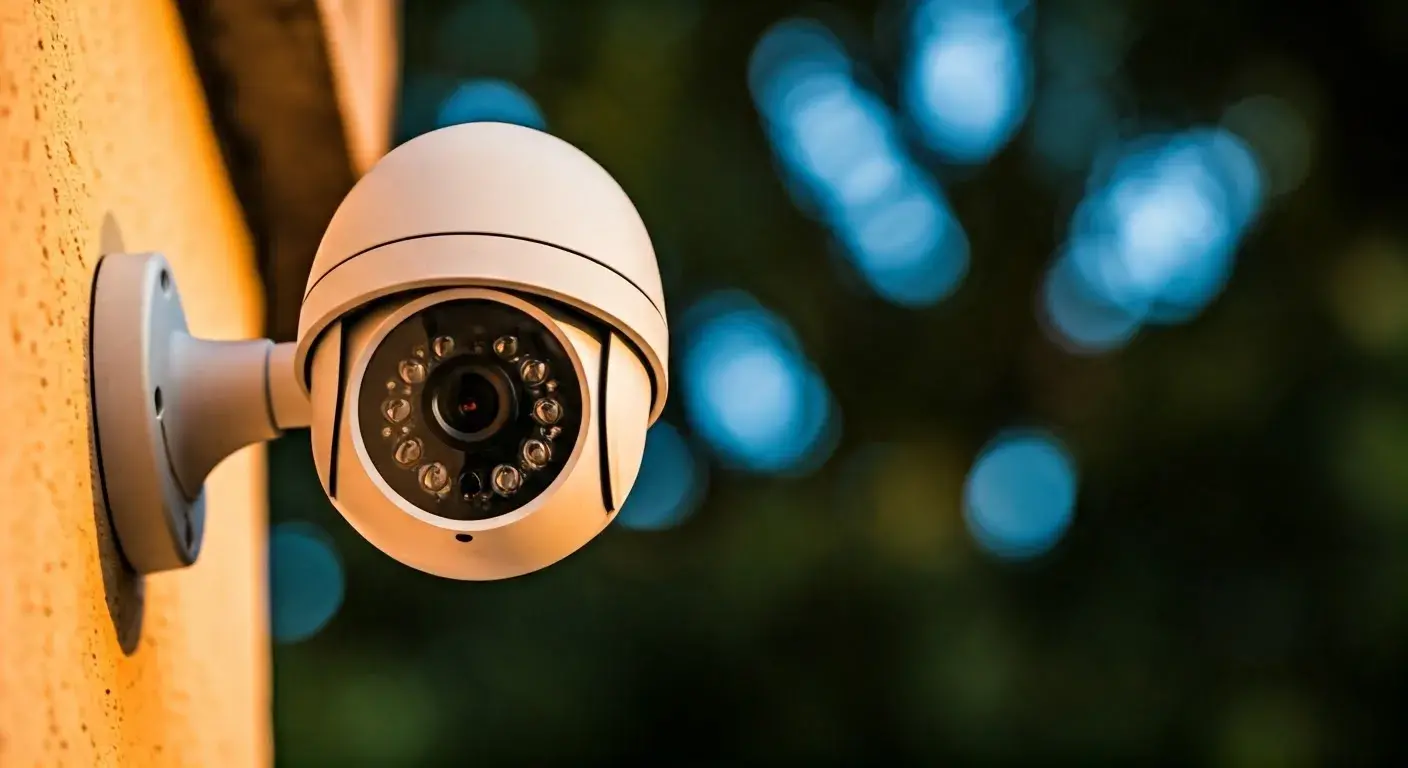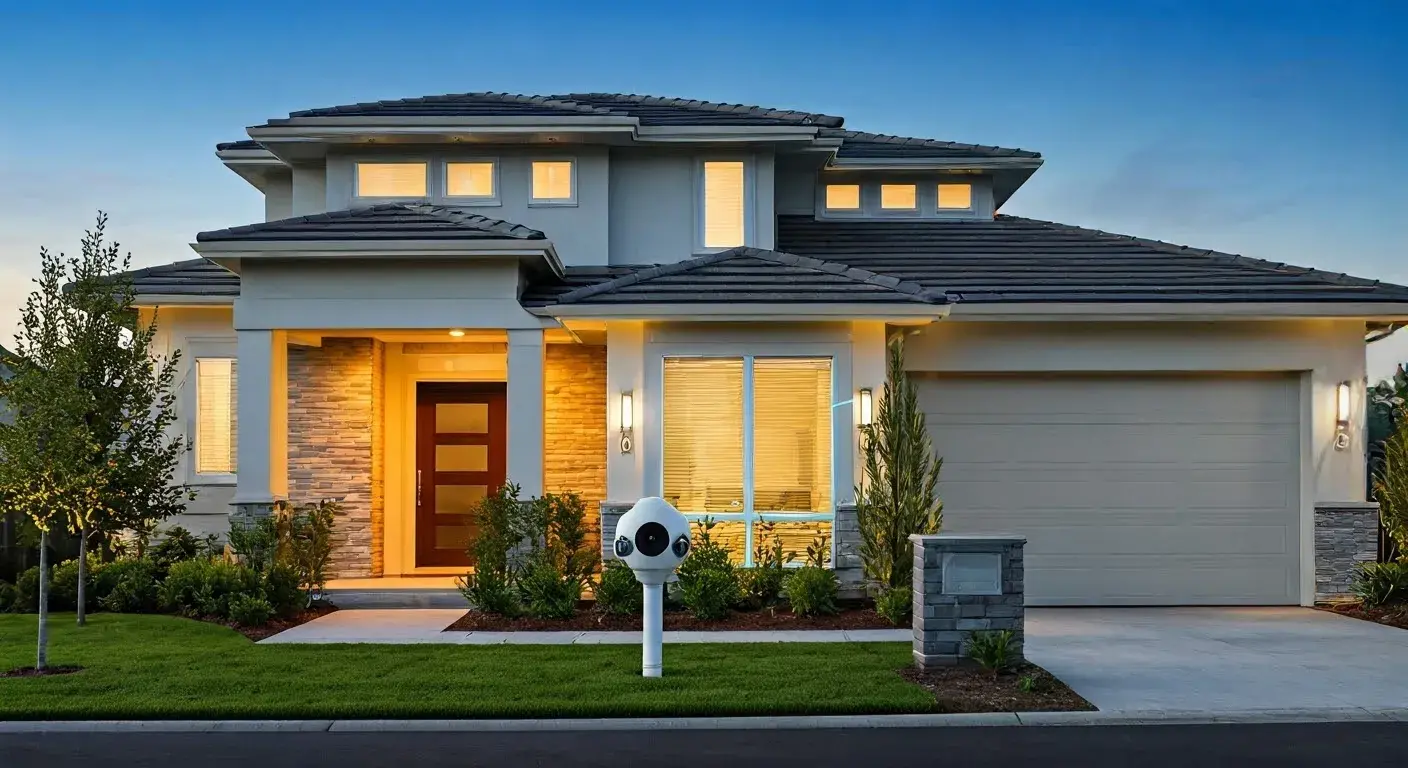When you set up a home security system, picking the right microSD card is important. The TF card, or microSD card, stores the recordings from your security camera. To choose the correct microSD card, think about how long you need to record, the resolution of the camera, and how many cameras you have. This way, you can make sure your important security footage saves properly. It gives you peace of mind and better safety for your home.
Understanding TF Cards for Home Security Systems
TF cards, also known as microSD cards, are small storage devices that are very important for local data storage in home security cameras. These tiny but powerful cards keep the important footage from your cameras. This helps you look back at past events and have a complete record of what happens around your home. TF cards serve as the memory bank for your security setup, making sure you have important evidence ready when you need it.
When your security camera sees motion or records all the time, it needs a place to save that information. This is where the TF card is useful, giving your camera a special spot to keep everything recorded. Choosing the right TF card size with a larger capacity is very important. It affects how much footage your system can hold before it starts to overwrite older files.
The Role of TF Cards in Security Cameras
In home security, TF cards are a good option for storing your security camera footage. Unlike cloud storage, which needs an internet connection for storing and accessing data, TF cards keep all recordings on the device itself. This is helpful, especially where the internet is not reliable or during outages. However, TF cards have limited capacity, which means you might need to manage your storage frequently. TF cards make sure you can record and access footage even if the internet is down.
When your security camera is in continuous recording mode, it films 24/7. This creates a lot of data. TF cards handle this by offering enough storage space for long recording times. This is very important in busy places or when constant monitoring is needed. You do not want to miss any important events just because of not having enough storage.
Using TF cards also means you do not have to pay monthly fees for cloud storage, unlike a subscription that might include a free trial. This makes them a more affordable option, especially for those who want to manage their recordings. TF cards offer quick and offline access to security footage.
Decoding TF Card Capacity and Speed for Optimal Performance
When you choose a TF card for your security camera, knowing about capacity and speed is very important. Capacity is how much data the TF card can store. Speed is about how fast it can write new data. This speed is vital for clear and steady video recording.
If you choose a TF card with a higher speed class, like Class 10, UHS-I/UHS-III, or a suitable video speed class, your camera can quickly write data. This helps when your camera is recording high-resolution video, like 1080p Full HD or 4 K. These videos have larger file sizes and need faster speeds to work well.
A TF card with a lower speed class may have trouble keeping up with the camera. This can create choppy video or cause data loss. So, it is smart to invest in a TF card that has good speed features. This way, your security camera can reliably capture and store video footage.
Selecting the Right TF Card Size
Choosing the right TF card size for your security camera depends on what you need and what the camera can do. Things like how many cameras you have, how long you want to record, and the size of the TF card, specifically its capacity, all help decide the best capacity.
It's important to find a good balance between having enough storage and keeping costs down. If you pick a card that is too small, you might keep overwriting footage. This could mean you miss important events. On the other hand, if you choose a card that is too large, you may waste storage space and spend more money than needed.
Estimating Storage Needs Based on Camera Resolution
The resolution of a camera’s resolution is very important for deciding how much TF card storage space you need. Cameras with a higher resolution, like those shooting in 1080p Full HD or 4K, create bigger video files. This means they require more storage for the same recording time.
For example, a 720p indoor camera uses a lot less storage per hour than a 1080p camera. It uses even less than a 4K camera. So, if your security camera has a high resolution, you need to think about the bigger file sizes. You should choose a TF card that has enough storage space to handle all the extra data.
It’s a good idea to check the camera's specs or user manual for the maximum card size. Manufacturers usually share how much storage you will use based on different resolution settings. This will help you find the right TF card size for how long you want to record and the resolution you want to use. It ensures you capture all the details without worrying about running out of storage too soon.
Analyzing Recording Modes: Continuous vs. Event-Driven
Understanding your camera's recording mode is important for deciding the right TF card size. Cameras that record continuously capture video all the time. This creates a lot more data than recording modes that only save clips when something happens, like motion detection.
Motion detection helps save storage. The camera only records when it sees movement. This means it makes shorter video clips and uses less space. This is a good choice for spots where not much happens.
If your security camera mainly uses motion detection, you can use a smaller TF card. But if you need all-day surveillance, and your camera does not have motion detection or you choose not to use it, you will need a larger TF card. This helps avoid overwriting and allows you to look back at earlier events without issues.
Key Specifications to Consider When Buying a TF Card
When choosing a TF card, its size is important, but it's not the only thing you should think about. Other facts, like speed class, durability, and compatibility, matter just as much. They help make sure your security system works well and lasts a long time.
For example, a TF card with a higher speed class allows for smooth video recording, especially for high-resolution cameras. A strong and durable memory card can handle daily use and different weather conditions, ensuring it lasts longer.
Compatibility with Your Home Security Camera
Before you buy a TF card for your home security camera, it is very important to check if it will work with your camera. Not all TF cards are the same, and some cameras have special needs or limits for the kinds of cards they can use.
To avoid any problems, always look at the user manual or product details for your security camera. Manufacturers usually tell you what types of TF cards are best, the biggest size you can use, and any needed speed class. If you use a card that does not fit, you could have issues with performance, recording errors, or the camera may not even see the storage.
Taking some time to check this compatibility can help you choose the right TF card for your security camera. That way, you ensure it works well and records without worries.
Evaluating Read/Write Speeds for Smooth Recording
When you choose micro SD cards or TF cards for security cameras, speed is very important. High read/write speeds help handle the constant data flow during video recording. This keeps the footage smooth and prevents lag or dropped frames. The 'write speed' shows how fast the card can save new data, while the 'read speed' shows how quickly it can access and transfer stored files.
You should look for TF cards with a Speed Class rating of Class 10 or higher. These cards are made for high-resolution video recording and provide the write speeds needed to avoid slowdowns. UHS (Ultra High Speed) cards, marked with Roman numerals like UHS-I or UHS-III, offer even faster data transfer rates and improve performance.
Choosing a TF card with good speed features ensures your security camera can record clear footage. This is especially important if you have a high-resolution camera or multiple cameras sending data at the same time. It allows you to capture every detail without missing important moments due to slow storage speed.
Understanding Durability for Outdoor or High-Traffic Environments
Durability is very important to think about when you choose a TF card for your security camera. This is especially true for outdoor cameras or places with a lot of activity. Outdoor cameras are exposed to different weather like temperature changes, humidity, and the chance of being physically shaken. Picking a strong TF card means it will work well and help prevent data loss in tough situations.
Look for TF cards that are made for durability. They are usually marked as 'high endurance' or 'surveillance-grade.' These cards are tested to handle extreme temperatures, shaking, and shocks. They are better than standard TF cards and make sure your security footage stays safe no matter the conditions.
In busy areas where the camera is always recording, a strong TF card is key. It can manage the frequent read/write cycles without getting worn out too soon. This ensures that your storage lasts longer, lowering the chance of data corruption and giving your TF card a longer life.
Maximizing Your TF Card's Potential
Once you choose the right TF card for your security camera, following some best practices can improve its performance and lengthen its life. Regularly formatting the card helps keep it running well. This clears out corrupted data or errors that can build up over time.
Also, make sure to back up your important footage to another storage option. This could be your computer or an external hard drive. Doing so gives you extra protection if your TF card gets damaged or stops working. It ensures you can access important evidence, even in unexpected situations.
Best Practices for TF Card Maintenance and Care
Taking good care of your TF card is important. It helps keep it working well and lasts longer. Using a few easy maintenance tips can avoid problems and make sure the card stores your security footage.
One way to take care of your TF card is to format it regularly. This means wiping all data off the card and getting it ready for new use. This can help the card work better and stop errors from broken files or small data issues. Most security cameras let you format the card right in their settings.
Also, try not to expose the TF card to very hot or cold temperatures, moisture, or any rough bumps. Even though some strong cards can handle tough conditions, it is still smart to lessen any risks. When you need to take out the card, make sure the camera is off. Always handle the card carefully and do not touch the gold contact points.
Strategies for Extending TF Card Life
TF cards do not last forever because of their flash memory tech. However, there are some ways to help them last longer. This is especially true for security cameras that use them a lot and often overwrite data. By using these tips, you can make sure you get the most out of your TF card and lower the chances of data loss.
One useful tip is to pick a TF card with more room than you think you need. This might sound strange, but a bigger card allows data to be saved across more space. This spreads out the wear and tear, so specific parts don't break down quickly. It helps the card last longer overall.
Also, think about changing your camera's recording setup to help save your TF card. Using motion detection recording instead of continuous recording cuts down the amount of data written to the card. This also helps reduce wear. You might also lower the recording quality or frame rate to save more space and keep your card working longer.
Conclusion
When you're looking to secure your home, choosing the right TF card for your security camera is very important. You need to think about the capacity, speed, and compatibility to make sure everything works well. Picking the right size and speed will help with smooth recording. Also, consider how tough the TF card is, especially if it will be used outside. Follow good maintenance practices to help it last longer. By using your TF card to its full potential, you can improve your home's security. If you're confused about which TF card is best for you, check our frequently asked questions section for help.






